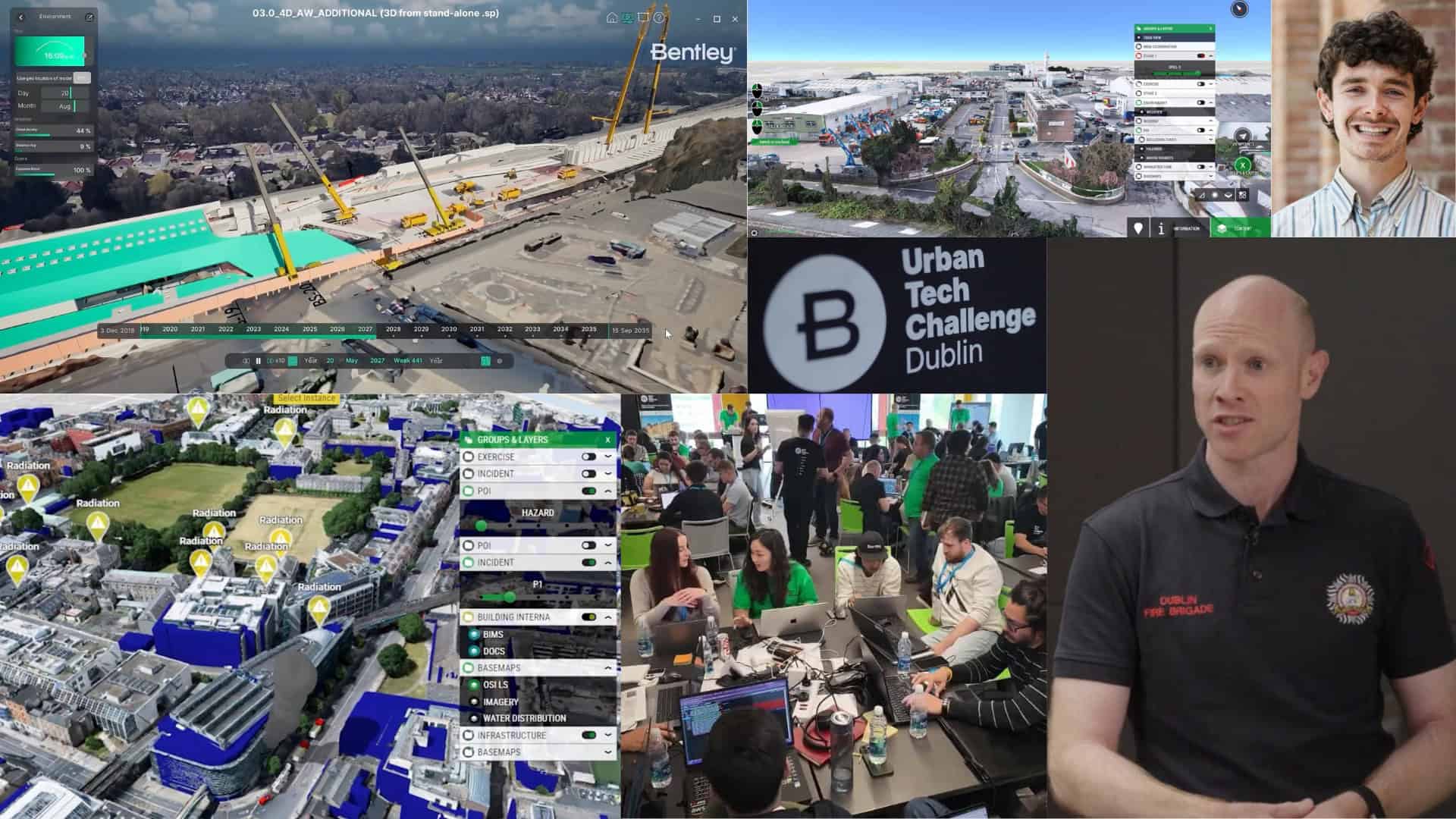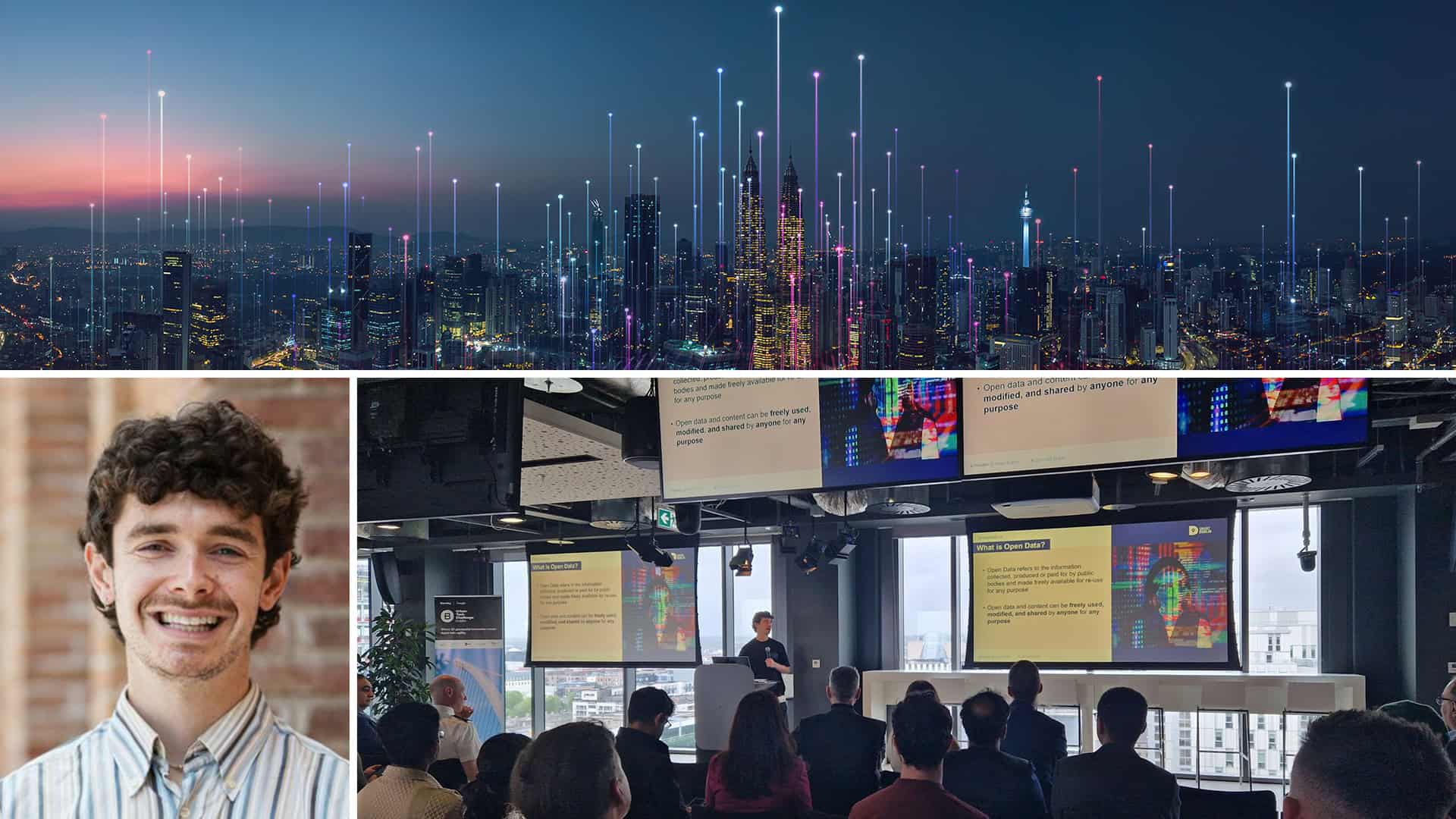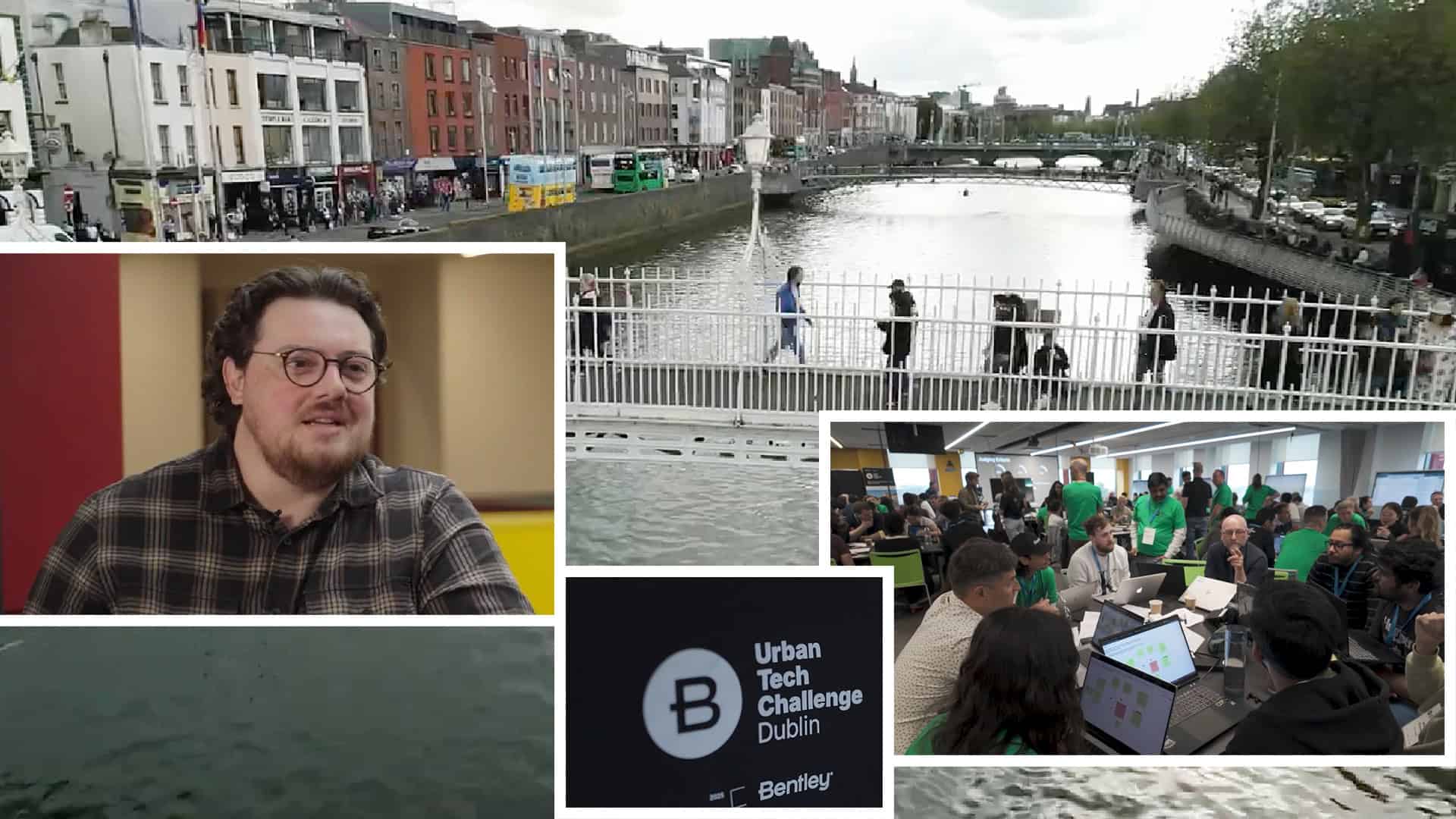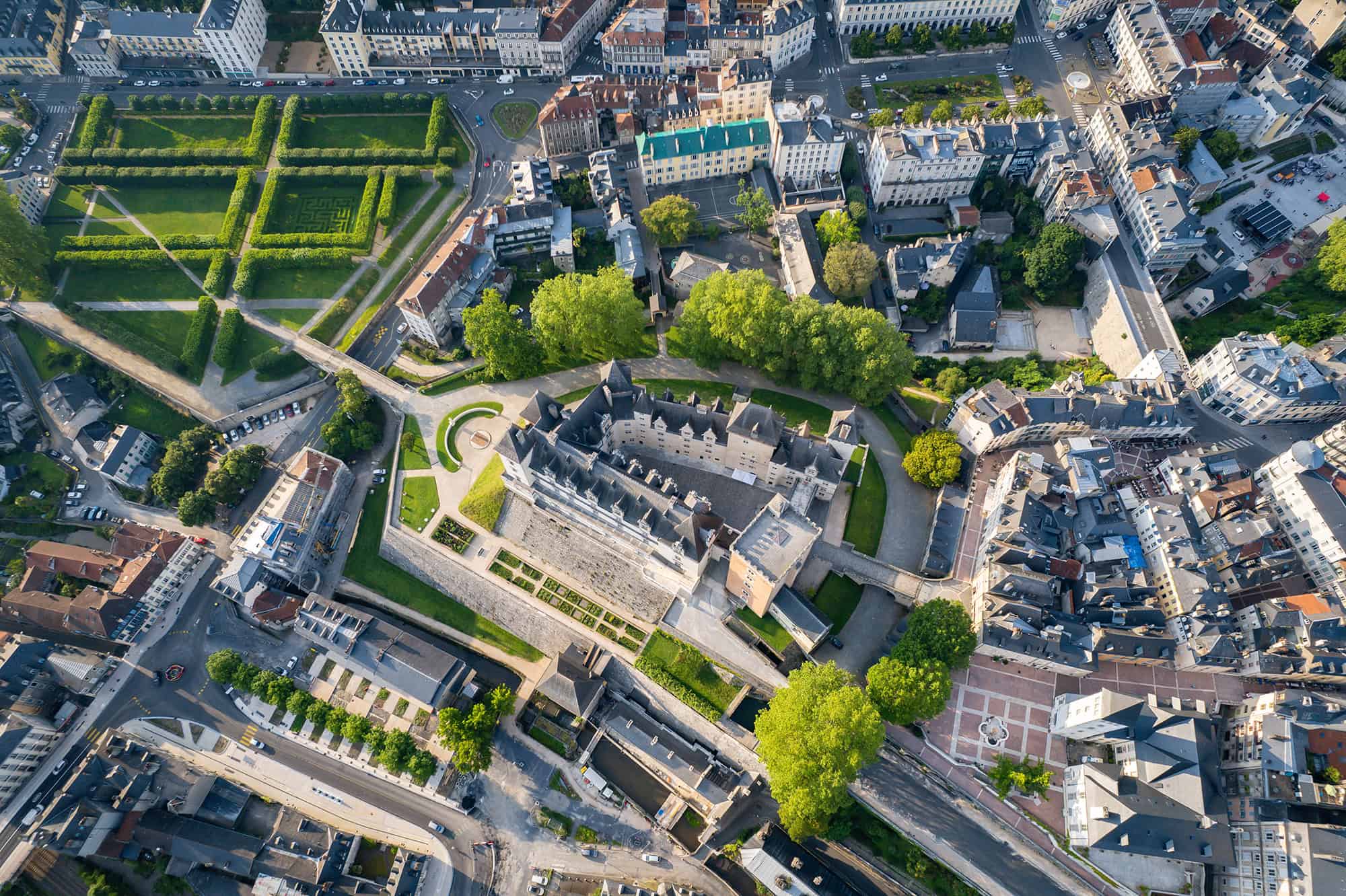How can a city keep first responders safe? Which streets are more prone to fires and flooding? How much rain keeps cyclists off the roads? How often do city dwellers really use walking paths?
For cities eager to improve their operations, asking such questions—and studying the resulting data—are key to making smarter decisions about infrastructure and city management. Digital twins powered by artificial intelligence (AI) offer these cities a powerful new tool in the process.
One city leading the way is Dublin. The Irish capital is testing a new digital twin— built with Bentley Systems’ Cesium geospatial platform and NVIDIA Omniverse—that brings together multiple data feeds on the city’s road users in real time. The solution uses data from VivaCity’s AI traffic sensors, powered by NVIDIA Jetson and NVIDIA Metropolis platforms, to identify close passes for cyclists, drivers, and pedestrians.
Dublin is among the cities showcasing their physical AI advancements at the Smart City Expo World Congress in Barcelona. Other cities—all using NVIDIA AI and accelerated compute —include Ho Chi Minh City in Vietnam and Raleigh, North Carolina, in the U.S.
NVIDIA has created a reference workflow for city-scale AI, NVIDIA Blueprint for smart city AI, which includes simulation, training, and deployment of AI agents. Bentley is contributing to the blueprint as a solution provider specializing in simulating city data for training and partnering with AI-accelerated independent software vendors, like VivaCity, to offer a complete end-to-end workflow.
Bentley and Dublin have been working together for years to leverage digital twins to improve urban planning, and this spring, the city hosted Bentley’s first Urban Technology Challenge. The event, which kicked off in Google’s Irish headquarters, brought together more than 90 people, from researchers, engineers, and urban planners to students, firefighters, and bankers. Bentley organized the event in partnership with Google, Dublin City University, Dublin City Council, and the urban innovation outfit Smart Dublin.
Organizers challenged participants to rethink urban planning, mobility, flood resilience, emergency services, and other critical city infrastructure—and to do it with the latest digital technology. That included leveraging open data in a 3D geospatial context and applying AI, including generative AI, to improve productivity.
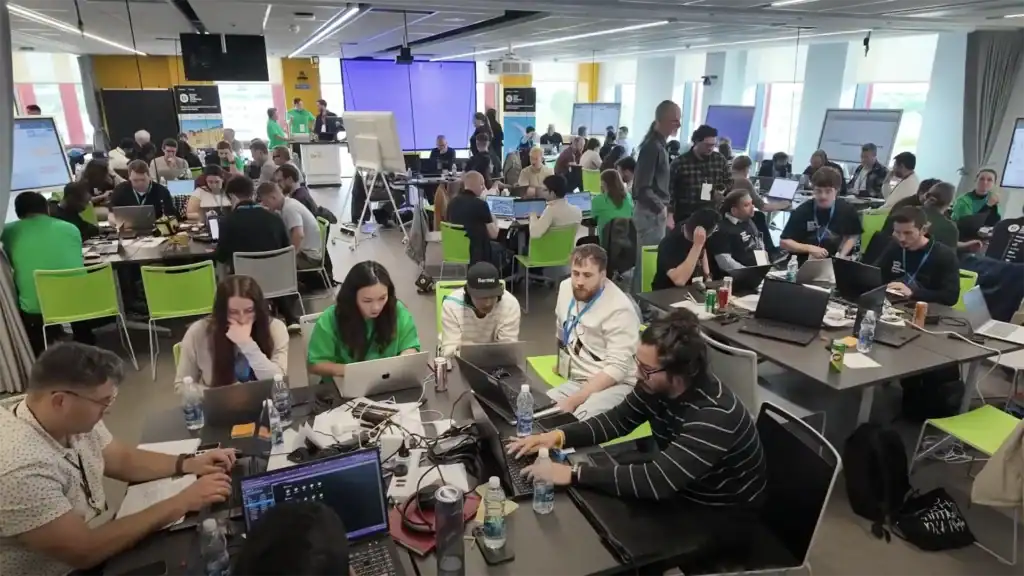
In October, the three teams with the best ideas presented their solutions at Bentley’s Year in Infrastructure conference in Amsterdam.
Creating a smart city “is about collaboration,” Nicola Graham, smart city program manager for the Dublin City Council, told the Bentley Insights blog.
“It’s about working with private industry, it’s about working with universities, and it’s about working with people to try and understand what their needs are and to try and utilize technology, to try and make the city more livable,” Graham said.
Graham and her Dublin City Colleagues, including Jamie Cudden, executive manager for corporate services and transformation, were excited about the collaboration taking place at Bentley’s Urban Technology Challenge earlier this year. One of the challenge winners, Rob Howell, is a station officer in Dublin Fire Brigade’s Organizational Intelligence Unit. Howell says he came to the tech challenge with “lots of tabular data, not understanding really what it means when you stick it all together.” Visualizing open city data with Cesium and open APIs “really made the most of all the information and gave us something we can really use moving forward in the fire service, hopefully in the months and years ahead,” he says.
The Smart City of Dublin
Dublin is among the cities showcasing their physical AI advancements at the Smart City Expo World Congress in Barcelona. Other cities—all using NVIDIA technologies —include Ho Chi Minh City in Vietnam and Raleigh, North Carolina, in the U.S.
Today, just over half the world lives in cities, and urban populations are set to double by 2050, the World Bank estimates. As more people become urban dwellers, Dublin’s approach could become a blueprint for other cities. It shows how digital twins can enable data-driven decision-making to help planners understand and influence how a city operates. It also illustrates how cities are increasingly deploying AI to handle growing population density and congestion.
Over the last few years, organizations in Dublin have adopted and implemented digital technology from Bentley in a bid to better serve communities, students, and other stakeholders. Along with a digital twin for the Dublin Fire Brigade, projects include Smart Docklands, a testbed for future connectivity, and Dublin City University, which uses the university’s campus as a “smart city sandbox” for testing and refining urban digital applications.
Here are some of the works Bentley is doing with Dublin to support innovation across the city and region.
How can we make cities smarter, safer, and more engaged with their citizens—all while using the latest digital technology? That was the challenge for teams taking part this summer in the first Urban Tech Challenge, an event organized by Bentley in partnership with Google, Dublin City Council, and Dublin City University.
The Student Teams Harnessing AI, Open Data, And Digital Twins To Make Cities Smarter
Watch as excitement builds at the Urban Tech Challenge, where Dublin City University students take part in the hands-on hackathon event. Over two days, student teams harnessed the latest and most advanced digital technology to make cities smarter, safer, and more livable.
The Bentley Horizons Podcast: The Dublin Urban Tech Challenge
Talent, hard work, and a portfolio of different skills were keys to success at the Urban Tech Challenge. While in Dublin, we recorded a podcast with some of the leading drivers behind the event: Smart Dublin’s Nicola Graham and Jack Kavanagh; Jamie Cudden of Dublin City Council; Richard Vestner, Bentley’s vice president for water and cities; and Corey Bradford, senior customer engineer at Google.
Smart Dublin’s Kavanagh knows a thing or two about the importance of open data. As the urban innovation outfit’s open data lead, Kavanagh manages a portal that consolidates public datasets ranging from traffic and air quality to planning and infrastructure. The goal is to make the data transparent, more accessible, and more useful, thereby reducing bureaucracy and fueling innovation.
Dublin Fire Brigade Blazes a Trail for Digital Twins
When Dennis Keeley joined the Dublin Fire Brigade in the 1980s, data gathering was rudimentary, with paper records of emergency calls impaled on a 6-inch nail. These days, Keeley—now Dublin’s fire chief—is leading a digital twin project that promises to make the city’s emergency response safer, smarter, and faster, and it’s using Bentley’s platform to do so.

